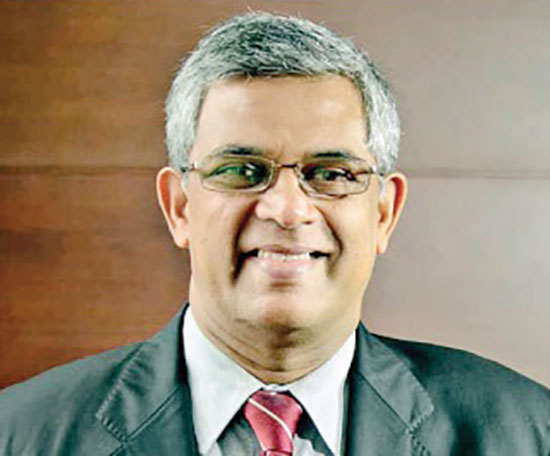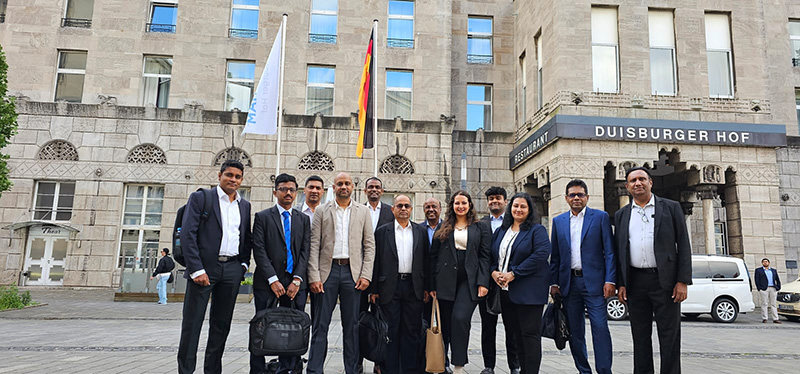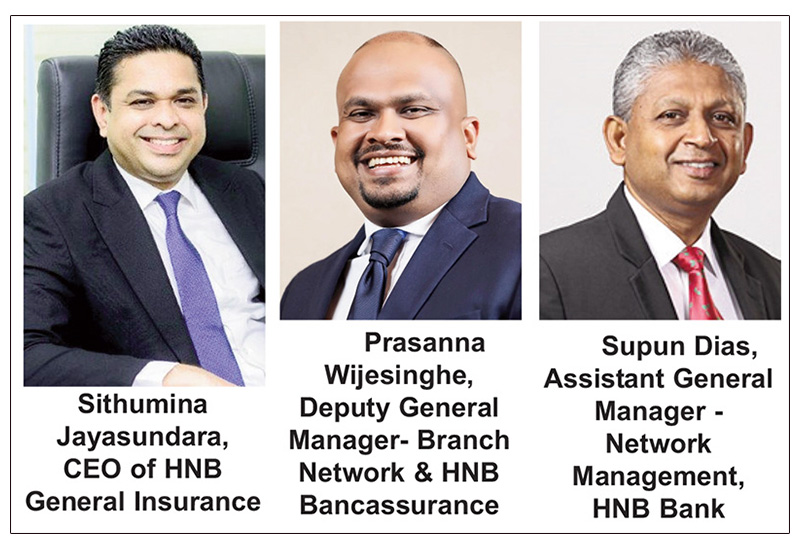Business
The road to economic recovery ahead is long, hard, and unavoidable

Talk to anyone waiting for days in a long queue to get a few litres of fuel for daily living, unable to cook food due to the lack of LP gas or forced to stay in the darkness due to the power cuts or unable to find critical medicine the same set of emotions are apparent: lamenting about lost livelihoods, confusion about the mess we are in, fear and trepidation about an uncertain present and future, and anger at those responsible for the mismanagement of the economy.
Along with those feelings come three questions. How did we get into this mess in the first place? What is debt restructuring and when will all this be over? And finally, how do we get out of this crisis and who must do what? The sense of uncertainty is almost physical. The answers will remain foggy for some time but let me attempt to briefly answer for all to understand.
Start with Sri Lanka’s debt, especially its external debt. In 2000, exports of goods and services were 39 per cent of GDP; in 2020, they had declined to 20 per cent. Sri Lanka has faced a ‘twin deficit’ problem for decades: imports have consistently been higher than exports, and public expenditure has consistently been higher than revenues.
The last 20 years is the story of a series of policy blunders reducing taxes and inefficiencies in tax collection, a bloated public sector, and unaffordable subsidies. Together, they drained the exchequer.
Our trade balance has been under pressure for a long time, due to high imports vs exports. Exports have not grown for a variety of reasons related to lack of competitiveness and low FDIs which have been discouraged by instability and governance issues in the country. Sri Lanka’s exports grew by only 1.2 times whereas Vietnam’s exports grew over 3 times and Bangladesh 2 times during the period 2011 to 2021. Trade balance issues worsened after Easter Sunday and Covid which led to large declines in tourism inflows.
On the external front, investing in ‘vanity’ and unproductive infrastructure projects, funded through market-based loans at high interest rates i.e., ISBs was the beginning of the external debt crisis, which only exacerbated thereafter due to infrastructure projects becoming a breeding ground for corruption.
In 2016, the three-year IMF programme for a $1.5 billion Extended Finance Facility (EFF) proposed a series of structural reforms to rebuild tax revenues, make Sri Lanka less reliant on foreign borrowing, promote an export-oriented economy and reduce the budget deficit. These included, tightening monetary policy, allowing the currency to float, and slashing subsidies was suspended in November 2019 for a home-grown solution. As a result, those reforms were not implemented, plunging Sri Lanka into its latest crisis.
Four more policy mistakes accelerated Sri Lanka’s descent into bankruptcy. What does bankruptcy mean? No financial institution is willing to extend any credit to Sri Lanka to import even the most essential medicine and fuel, leading to Sri Lanka degrading itself to a hand-to-mouth existence, having exhausted all foreign exchange reserves of the country.
First, reducing taxes in November 2019 cost the Sri Lankan economy profoundly as concerns were raised about Sri Lanka’s debt sustainability, leading to the Credit Rating downgrades. This resulted in thwarting the ability to tap global sovereign debt market for further foreign borrowings, available only based on investor confidence in the country’s ability to repay foreign commercial borrowings.
Second, attempting to maintain a fixed exchange rate leading to a 52% reduction of worker remittances from a year ago (the only country to face a reduction of remittances) and a widening trade deficit, as the overvalued rupee favoured imports over exports. Approximately, USD 5 billion of the reserves was wasted to defend the Rupee, and another USD 500 million to repay foreign debt in January 2022 leading to a further depletion of the meagre foreign reserves of the country.
Third, the decision not to pre-emptively renegotiate debt restructuring with the IMF when the Covid-19 pandemic hit in 2020 while Sri Lanka’s debt was still sustainable. Lenders would have been willing for a more generous restructuring of debt, just as multilateral and bilateral lenders did in the wake of the tsunami in December 2004.
Fourth, in 2021, a misguided and inappropriate policy to implement an outright ban on import of chemical fertilisers was imposed in the name of ‘import substitution’ to conserve foreign exchange reserves. This hit the tea industry and paddy crops, impacting Sri Lanka’s export crops, thereby forcing Sri Lanka to import food to fight hunger.
…Debt restructuring process will be tough and long drawn out…
So, what happens now? Sri Lanka had no choice but to approach the IMF again, for the 17th time. Since Sri Lanka has now defaulted on its debt, it does not meet debt sustainability criteria, and therefore, obtaining a facility from IMF this time will be difficult, more long drawn out. Additionally, accessing the IMF’s Rapid Financing Instrument is also ruled out.
Negotiating a macro-economic programme supported with IMF financing will be contingent on Sri Lanka undertaking accelerated structural reforms to achieve economic growth and debt sustainability. The process will require arriving at a debt restructuring agreement with bondholders, and then with Multilateral Financial Institutions (MFIs) and other bilateral borrowers. Given the past failures of Sri Lanka to keep its word, they will be tougher this time.
The first stage is to reach a Staff Level Agreement (SLA) with IMF and thereafter, seek the IMF executive board approval for an Extended Fund Facility (EFF). EFF will be further supported by World Bank and ADB and friendly countries such as Japan, USA and the European Union. The earliest we could expect some funding is in 2023 and country to get back to some normalcy by 2026.
The actions of Central bank have made debt sustainability even more elusive. By allowing the interest rates on treasury bills to overshoot, the Central Bank has crippled the SMEs, corporates, banking sector and the public finance. The ostensible reason for increasing interest rates to tame inflation, is unlikely to hold, as inflation is driven primarily by external factors, collapse of the value of the Sri Lankan rupee and other supply side issues.
The people of Sri Lanka have completely lost confidence and trust in the Government’s ability to resolve the crisis. The People’s struggle “Aragalaya” will only intensify. Their demands are well justified. A “System Change” is required. Those responsible for the crisis must leave and it is the need of the hour for an all-party interim Government to be established. Further, it is imperative to call for a General Election as soon as possible for a more competent and honest set of professionals to be elected to the Legislature in ensuring proper governance of the country. The costs associated with having a General Election pale into insignificance compared to the massive costs of running an incompetent government. Perhaps, Donor countries may agree to provide a grant of USD 20 million to hold a General Election.
What do we have to do? Sri Lanka needs a credible national policy and a plan agreed by all those who have the best interest of the Country at heart to get the country out of the crisis. The plan or reform agenda should comprise of eight core focus areas. To pursue the plan with the IMF, credibility and integrity of the public officials and the Government must be reinstated to portray that Sri Lanka is on the path to economic recovery and obtain the EFF facility. This is the only hope, there is no other alternative.
First, Sri Lanka must stem the widespread bribery and corruption with harsh penalties, similar to penalties in countries such as Singapore. No donor or Sri Lankan expat wants to see their help to the people being scammed by the unscrupulous politicians and Government officials.
Second, government expenditure must be curtailed, the burden imposed on the people because of loss-making State-Owned-Enterprises (SOE) must be removed. One option would be to restructure and list all SOEs in the Colombo Stock Exchange for better governance and accountability of SOEs. It is time, the public change their misguided mindset and realise the futility of SOEs that are sustained for the ultimate benefit of politicians such as Sri Lankan Airlines where the public had to bear Rs. 372 billion of accumulated losses since 2008. The operating losses of Ceylon Petroleum Corporation (CPC), first four months of 2022 despite price increases is Rs. 64.9 billion.
Third, Sri Lanka will have to live within its means; The Government cannot simply print money, to provide relentless relief “Sahana” to the people and continue to be a welfare state. People should pay at least the cost for Government services and utilities. All spending must be carefully thought through and planned. Public spending on infrastructure should only be on projects that would generate income to pay back debt. Financial discipline of the State is imperative manage the fiscal deficit. Sri Lanka will have to focus on developing an active local capital market with 30–50-year debt instruments to support the asset and liability match to fund infrastructure projects. For example, Malaysia have raised local currency debt for most of their infrastructure projects.
Fourth, the Government revenue at 8% of GDP remains one of the lowest in the world. The tax system will have to be overhauled to widen the tax net to increase Government revenue. The BOI has become a failure and is responsible for large leakages of tax revenue. BOI need to be overhauled and incentive structure need to be critically reviewed to attract more FDI.
Fifth, Sri Lanka should refocus on a major tourism drive to attract more tourists. In 2018, Sri Lanka Tourism generated receipts worth USD 4.5 billion, which can be swiftly achieved and surpassed. Further, a massive export drive to make Sri Lanka an export-oriented economy like Vietnam is essential. We have an untapped opportunity in value-creating exports such as Graphite, Crystal and Mineral Sand that can easily reach over USD 500 million per month. Adding even greater value should be encouraged with the appropriate policies to prioritize foreign-exchange-earning manufacturing industries, agriculture, and service exports.
Sixth, a well-designed, and properly targeted social safety net will be crucial to protect the most vulnerable and provide for them adequately, but only for as long as necessary.
Seventh, despite the hardships and pain that comes from austerity, Sri Lanka, its people, and its Government – the Executive and all parties in Parliament must stay committed to the agreed upon reform agenda for the next ten years. Repeating the mistakes of the past is unaffordable and will inflict pain upon the generations to come.
Eight, the public is expecting restitution and those who brought economic ruin and robbed the country to be held accountable for their actions and prosecuted in a court of law. The public are also demanding for funds misappropriated to be brought back.
President John F. Kennedy’s in his inaugural address said, “Ask not what your country can do for you, ask what you can do for your country” and challenged every citizen to contribute in some way to the public good. A democracy is a government, by the People, for the People. It is the people who hold the power of a democracy, and therefore, it is imperative that the people of Sri Lanka act diligently at the next General Election in electing competent and honest professionals to the Parliament irrespective of their party affiliations to govern the country and not repeat the mistakes of the past 74 years.
(The writer is a Member of the Disciplinary Review Council of the CFA Institute, USA and Advocacy Chair and Board Director of CFA Society Sri Lanka and functioned as a member of the Code of Conduct Review Committee (CoCRC) of the Central Bank of Sri Lanka 2020-2021 and can be reached at abeysuriya@hotmail.com)
Business
AHK Sri Lanka champions first-ever Sri Lankan delegation at Drupa 2024

The Delegation of German Industry and Commerce in Sri Lanka (AHK Sri Lanka) proudly facilitated the first-ever Sri Lankan delegation’s participation at Drupa 2024, the world’s largest trade fair for the printing industry and technology. Held after an eight-year hiatus, Drupa 2024 was a landmark event, marking significant advancements and opportunities in the global printing industry.
AHK Sri Lanka played a pivotal role in organising and supporting the delegation, which comprised 17 members from the Sri Lanka Association for Printers (SLAP), representing eight companies from the commercial, newspaper, stationery printing, and packaging industries. This pioneering effort by AHK Sri Lanka not only showcased the diverse capabilities of Sri Lanka’s printing sector but also facilitated vital bilateral discussions with key stakeholders from the German printing industry.
Business
Unveiling Ayugiri: Browns Hotels & Resorts sets the stage for a new era in luxury Ayurveda Wellness

In a captivating reimagining of luxury wellness tourism, Browns Hotels & Resorts proudly unveiled the exquisite Ayugiri Ayurveda Wellness Resort Sigiriya. This momentous occasion, celebrated amidst a vibrant and serene grand opening on the 6th of June, heralds a new chapter in the Ayurveda wellness tourism landscape in Sri Lanka. Nestled amidst 54 acres of unspoiled natural splendour, Ayugiri features 22 exclusive suites and stands out as the only luxury Ayurveda wellness resort in the country offering plunge pools in every room, rendering it truly one-of-a-kind.
The grand opening of Ayugiri Ayurveda Wellness Resort was an enchanting event, where guests were captivated by the melodies of flutists and violinists resonating through Sigiriya’s lush landscapes. As traditional drummers and dancers infused the air with vibrant energy, Browns Hotels & Resorts’ CEO, Eksath Wijeratne, Kotaro Katsuki, Acting Ambassador for the Embassy of Japan and General Manager, Buwaneka Bandara, unveiled the resort’s new logo, marking a significant moment witnessed by distinguished guests from the French Embassy, Ayurveda and wellness enthusiasts along with officials from the Sigiriya area, LOLC Holdings and Browns Group.
“Our strategic expansion into wellness tourism with Ayugiri Ayurveda Wellness Resort Sigiriya symbolises a significant milestone for Browns Hotels & Resorts. Wellness tourism has consistently outperformed the overall tourism industry for over a decade, reflecting a growing global interest in travel that goes beyond leisure to offer rejuvenation and holistic well-being. By integrating the timeless wisdom of Ayurveda with modern luxury, we aim to set a new standard in luxury wellness tourism in Sri Lanka. Whether your goal is prevention, healing, or a deeper connection to inner harmony, Ayugiri offers a sanctuary for holistic well-being” stated Eksath Wijeratne.
Ayugiri encapsulates the essence of life, inspired by the lotus flower held by the graceful queens of the infamous Sigiriya frescoes. Just as the lotus emerges from the murky depths, untainted and serene,
Ayugiri invites guests on a journey of purity and rejuvenation, harmonised with a balance of mind, body and spirit, the essence of nature, echoes of culture and the wisdom of ancient Ayurvedic healing.
Business
HNB General Insurance recognized as Best General Bancassurance Provider in Sri Lanka 2024

HNB General Insurance, one of Sri Lanka’s leading general insurance providers, has been honored as the Best General Bancassurance Provider in Sri Lanka 2024 by the prestigious Global Banking and Finance Review – UK.
The esteemed accolade underscores HNB General Insurance’s unwavering commitment to excellence and its outstanding performance in the field of bancassurance. Through dedication and hard work, the HNB General Insurance team has continuously endeavored to deliver innovative insurance solutions, cultivate strong relationships with banking partners, and provide unparalleled service to customers nationwide. This recognition is a testament to the team’s dedication and relentless pursuit of excellence in the bancassurance business.
“We are honored to receive this prestigious award, which reflects our team’s tireless efforts and dedication to delivering value-added insurance solutions and exceptional service through our bancassurance partnerships,” said Sithumina Jayasundara, CEO of HNB General Insurance. “This recognition reaffirms our position as a trusted insurance provider in Sri Lanka and motivates us to continue striving for excellence in serving our customers and communities.”












